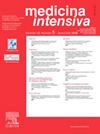在重症监护室接受血管活性药物治疗的休克患者的早期活动:观察性研究的系统回顾和荟萃分析
IF 3.1
4区 医学
Q2 CRITICAL CARE MEDICINE
引用次数: 0
摘要
目的本研究旨在评估重症监护病房(ICU)需要血管活性药物的休克患者早期活动的可行性和安全性。设计系统回顾和荟萃分析。重症监护病房(ICU)。患者或参与者在重症监护室接受早期动员的需要血管活性药物的成年患者。干预:系统检索PubMed、Cochrane Library、Scopus、Medline Ovid、Science Direct和CINAHL数据库,包括需要血管活性药物且接受早期动员的成年患者的观察性研究。对高、中、低剂量血管活性药物患者的安全事件比例和早期活动比例进行了荟萃分析。主要感兴趣的变量可行性、安全事件和早期动员期间达到的最大活动水平。结果共检索到1875项研究,其中8项纳入系统评价,5项纳入荟萃分析。结果显示,64% (95% CI: 34%-95%, p <;0.05)的患者使用低剂量血管活性药物,30% (95% CI: 7%-53%, p <;中剂量组为0.05),高剂量组为7% (95% CI: 3%-16%, p 0.17)。不良事件的比例较低,为2% (95% CI: 1%-4%, p <;0.05)。结论休克患者早期活动和使用血管活性药物是可行且安全的。然而,人们强调需要进一步的高质量研究来证实这些发现。本文章由计算机程序翻译,如有差异,请以英文原文为准。
Early mobilisation in patients with shock and receiving vasoactive drugs in the intensive care unit: A systematic review and meta-analysis of observational studies
Objective
The aim of the study was to assess the feasibility and safety of early mobilisation in patients with shock requiring vasoactive drugs in the intensive care unit (ICU).
Design
Systematic review and meta-analysis.
Setting
Intensive care unit (ICU).
Patients or participants
Adult patients requiring vasoactive drugs who received early mobilisation in the intensive care unit.
Interventions
A systematic search was conducted using the databases PubMed, Cochrane Library, Scopus, Medline Ovid, Science Direct, and CINAHL, including observational studies involving adult patients requiring vasoactive drugs who received early mobilisation. A meta-analysis was performed on the proportion of safety events and the proportion of early mobilisation in patients with high, moderate, and low doses of vasoactive drugs.
Main variables of interest
Feasibility, safety events, and the maximum level of activity achieved during early mobilisation.
Results
The search yielded 1875 studies, of which 8 were included in the systematic review and 5 in the meta-analysis. The results showed that 64% (95% CI: 34%–95%, p < 0.05) of patients were mobilised with low doses of vasoactive drugs, 30% (95% CI: 7%–53%, p < 0.05) with moderate doses, and 7% (95% CI: 3%–16%, p 0.17) with high doses. The proportion of adverse events was low, at 2% (95% CI: 1%–4%, p < 0.05).
Conclusions
Early mobilisation in patients with shock and the need for vasoactive drugs is feasible and generally safe. However, there is an emphasis on the need for further high-quality research to confirm these findings.
求助全文
通过发布文献求助,成功后即可免费获取论文全文。
去求助
来源期刊

Medicina Intensiva
CRITICAL CARE MEDICINE-
CiteScore
2.70
自引率
20.00%
发文量
146
审稿时长
33 days
期刊介绍:
Medicina Intensiva is the journal of the Spanish Society of Intensive Care Medicine and Coronary Units (SEMICYUC) and of Pan American and Iberian Federation of Societies of Intensive and Critical Care Medicine. Medicina Intensiva has become the reference publication in Spanish in its field. The journal mainly publishes Original Articles, Reviews, Clinical Notes, Consensus Documents, Images, and other information relevant to the specialty. All works go through a rigorous selection process. The journal accepts submissions of articles in English and in Spanish languages. The journal follows the publication requirements of the International Committee of Medical Journal Editors (ICMJE) and the Committee on Publication Ethics (COPE).
 求助内容:
求助内容: 应助结果提醒方式:
应助结果提醒方式:


